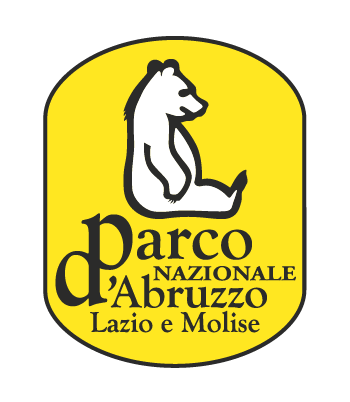LE SPECIE TARGET
Orso bruno - Italia
In Italia ci sono due distinte popolazioni di orso bruno: una sulle Alpi orientali, che deriva dalla popolazione dell’Orso bruno europeo, e una sull’Appenino Centrale- l’Orso bruno marsicano (Ursus arctos marsicanus), una sottospecie dell’Orso bruno europeo. La piccola popolazione di orsi presente sull’Appenino è stata caratterizzata da un lungo periodo di isolamento (400-600 anni), che ha determinato una differenziazione genetica e morfologica dal resto della popolazione europea di orso bruno. Per questo motivo, la popolazione appenninica di orso deve essere considerata da un punto di vista evolutivo e conservazionistico, come un’unità a sé stante. Negli ultimi 200 anni l’areale dell’orso bruno sull’Appennino si è progressivamente ridotto principalmente a causa della persecuzione operata dall’uomo, fino alla creazione del Parco Nazionale d’Abruzzo nel 1923. Attualmente, il nucleo principale della popolazione di orso è presente quasi esclusivamente all’interno del territorio del Parco e nelle aree circostanti. Nel 2014 nel territorio del PNM, per la prima volta, è stato osservato un gruppo familiare. Complessivamente l’area idonea per la presenza della specie ha una superficie di più di 10000 Km2, dove il problema principale è la frammentazione dell’habitat causata dalla presenza delle strade. Il monitoraggio della popolazione effettuato all’interno del territorio PNALM nel 2011 e nel 2014, nell’ambito del progetto LIFE ARCTOS, ha prodotto una stima di 50 individui (45-69). Nel PNM è stata registra la presenza di un gruppo familiare e alcuni individui isolati. L’orso bruno marsicano è incluso nella lista rossa dell’IUCN nella categoria “In pericolo critico”.
Orso bruno - Grecia
L’areale di distribuzione dell’orso bruno (Ursus arctos) in Grecia è costituito da due nuclei di popolazione distinti, distanti tra loro di 150-200 km, e situati nelle aree nordoccidentali e nordorientali del paese, rispettivamente i monti Peristeri-Pindos e i Rodopi con una presenza stabile della specie su una superficie complessiva di circa 13.500 km2. Durante gli ulti 15 anni la popolazione dell’orso è cresciuta costantemente, infatti questi animali hanno ricolonizzato alcune zone storiche dell’areale pregresso nel settore occidentale. L’area di presenza stabile della specie e quella di recente ricolonizzazione interessano un’area di circa 22.000 km2 e la popolazione a livello nazionale è stimata intorno ai 500 individui (Pilidis 2015). La dimensione della popolazione può essere descritta nella maniera seguente: I Scala Bioregionale: Il nucleo della popolazione occidentale di orso bruno che è collegato alla popolazione Pindo-Dinarica (che interessa 8 paesi differenti dei Balcani occidentali) comprende 3070 individui (fonte: Status, management and distribution of large carnivores – bear, lynx, wolf & wolverine – in Europe (2013) (P. Kaczensky, G. Chapron, M. von Arx, D. Huber, H. Andrén & J.Linnell Eds.). II Scala nazionale (Grecia): la stima minima della popolazione è di 500 individui (Pilidis 2015). III Scala regionale: l’area interessata dal progetto LIFE SAFE-CROSSING. Prima area del progetto (1): la dimensione minima della popolazione è compresa tra 100-205 individui (Tsparis et all 2014). Seconda area del progetto (2): (a) approssimativamente un minimo di 130 individui (Karamanlidis et al. 2010) e (b) approssimativamente 109 individui (min. 52 – max 196, 95% CI) (Pilidis et al. 2015). Il progetto farà riferimento alla seconda stima, in quanto più recente della prima. Complessivamente le due sub-aree del progetto comprendono il 50% della popolazione di orso bruno presente in Grecia. Complessivamente lo stato di conservazione dell’orso bruno marsicano è stato valutato ,sulla base degli ultimi 2 report nazionali (92/43 art. 17) da Favorevole (F-) a Sfavorevole (U1), perché la distribuzione della specie è influenzata da un collo di bottiglia dovuto alla distruzione dell’habitat per la presenza di grandi infrastrutture (principalmente la rete autostradale) e a causa delle dannose attività dell’uomo, come gli incendi boschivi, i cambiamenti nell’uso del suolo, e il bracconaggio.
Orso Bruno - Romania
La popolazione rumena di orso bruno (Ursus arctos) è distribuita sull’intera area boschiva dei Monti Carpazi, occupando una superficie di circa 69.000 km2 (Ionescu 1999). Lo stato di protezione legale dell’orso in Romania è stato garantito dalla legge n. 407/2006 per la protezione fauna selvatica, che è stata successivamente modificata e che include l'orso bruno nel suo allegato 2 come specie di interesse nazionale, per cui non è consentita la caccia. In seguito all'ingresso nell'Unione Europea nel 2007, lo status di protezione legale dell’orso bruno in Romania è stato ulteriormente rafforzato attraverso l'inclusione della specie negli allegati 3 e 4 dell'OUG n. 57/2007 (Legge n. 49/2011), che elenca le specie di flora e fauna di interesse europeo, che richiedono uno stato di protezione rigoroso e la designazione di aree di conservazione speciali per ampliare la rete Natura 2000 di aree protette. Nel 2016 la popolazione è stata stimata tra i 6.050 e i 6.640 individui (Iordache, Jurj et al. 2016). La densità maggiore si registra nei Carpazi nordorientali e in quelli centrali. La valutazione dello stato di conservazione delle specie e degli habitat inclusi negli allegati IV e V della Direttiva Habitat condotta nel periodo 2006-2012, che ha segnalato lo stato di conservazione delle specie alla Commissione dell'UE sulla base dell'articolo 17 della Direttiva Habitat afferma che "lo stato di conservazione della popolazione di orso bruno nelle regioni biogeografiche alpine e continentali in Romania è favorevole".
Lince iberica - Spagna
La lince iberica (Lynx pardinus) è considerata il felino più minacciato al mondo (Novell, 2002). Durante il ventesimo secolo tale specie ha subito un forte declino, passando da 5.000-6.000 individui nei tardi anni ’60, a 1.000-1.200 negli anni ’90, fino a toccare un minimo di circa 160 animali nel 2002. Il drastico declino della lince è stato legato principalmente ai seguenti fattori: -Diminuzione della popolazione di conigli a causa della mixomatosi e della malattia emorragica (EHV) di questa specie; malattie che complessivamente hanno determinato una riduzione del 90% della popolazione dei conigli - La persecuzione diretta e indiretta della specie - Eventi stocastici come le malattie A partire dal 2001 la Consejería de Medio Ambiente della Regione Andalusia ha messo in atto un grande sforzo per la conservazione della lince iberica, attraverso il “programa de Actuaciones para la conservación del lince en Andalucía I, II y III (Feoga)” e tre progetti LIFE per il recupero della specie: LIFE02NAT/E/8609, LIFE06NAT/E/209 and LIFE10NAT/ES/570. Grazie a questi interventi la popolazione di lince ha avuto una notevole ripresa, infatti secondo l’ultimo censimento, effettuato nel 2016, il numero di individui nella penisola iberica è aumentato a 483, di cui 397 in Andalusia. In questa regione, i due nuclei sono localizzati nell’area Doñana-Aljarafe e in Sierra Morena (vedi la mappa B2c1). Negli ultimi 5 anni la popolazione della lince è aumentata del 21% mentre la sua distribuzione del 34,4% Grazie a questi miglioramenti nel 2015 la IUCN ha declassato lo stato di conservazione della lince iberica da Critico (CR) a In Pericolo (EN). Comunque, sebbene questi risultati siano molto incoraggianti, la lince è una specie ancora seriamente minacciata e a rischio di estinzione, per questo motive gli sforzi per la sua conservazione non devono diminuire.













 The project is partially co-funded
The project is partially co-funded